Analysis and Design of Damping Circuit Parameters for LCC Valves Based on Broadband Model
Abstract
:1. Introduction
2. Calculation Models of The Turn-off Process
2.1. The Conventional Low Frequency Model
2.2. The Broadband Model
2.2.1. Converter Transformer
2.2.2. Wall Bushing
2.2.3. Converter Valve
2.2.4. Smoothing Reactor
2.3. Comparative Analysis
2.3.1. High Frequency Parameters in Converter Transformer
2.3.2. High Frequency Parameters in Wall Bushings
2.3.3. High Frequency Parameters in Converter valves
2.3.4. High Frequency Parameters in Smoothing reactor
2.4. Summary
3. Performance Indicators of Damping Circuit
3.1. Commutation overshoot Uovst
3.2. Forward Voltage Rise Rate du/dt
3.3. Turn-off Power Losses PL
3.4. Unbalanced Voltage Distribution in Converter Valve
3.5. Summary
4. Damping Circuit Parameters Design
4.1. Design Characteristics
4.2. Optimization Algorithm
5. Case Study
5.1. Problem Formulation
5.2. Optimization Results Considering Balanced Voltage Distribution
5.3. Parameter Optimization Considering Unbalanced Voltage Distribution
5.4. Analysis of Economic Functions
6. Conclusions
- During the turn-off process of converter valve, the analytical calculation for the transient valve voltage has a low accuracy due to the application of low-frequency equipment models. High frequency parameters of valve equipment have non-negligible effects on the turn-off process, which are important for the damping circuit design. Thus, it is suggested to adopt the broadband model to evaluate the turn-off performances of converter valve based on numerical calculation methods.
- There are inevitable conflicts existing in the parameters design of the damping circuit so that the turn-off performances cannot be optimized simultaneously. Besides, the unbalanced voltage distribution in the converter valve should also be studied for damping circuit parameter design. The damping circuit parameter design is essentially a constrained multi-objective optimization problem.
- Parameters of the damping circuit can be optimized by the proposed optimization method consisting of EMT numerical calculation and the nonlinear simplex method. The concept of economic function is proposed to form a comprehensive objective function. The case study shows that the proposed optimization method has a good convergency.
- The forms and parameters of economic functions can be adjusted according to the requirement of practical engineering. The optimization results presented in Section 5 have verified the reliability and flexibility of the proposed optimization method.
Author Contributions
Funding
Conflicts of Interest
Abbreviations
| AC | Alternating current |
| DC | Direct current |
| HVDC | High voltage direct current |
| UHVDC | Ultra high voltage direct current |
| LCC | Line commutated converter |
| PCOV | Peak value of continuous operating voltage |
| EMT | Electromagnetic transient |
| PCC | Point of common coupling |
| Zc | Common impedance at point of common coupling |
| V1 ~ V6 | Converter valve, subscripts represent valve numbers |
| Rd and Cd | Parameters of damping circuit: damping resistance and damping capacitance |
| ir(t) | Reverse recovery current |
| Uovst | Commutation overshoot |
| du/dt | Forward valve voltage rise rate |
| PL | Power losses during valve turn-off process |
| Qrr | Reverse recovery charge |
| trr | Reverse recovery time |
| EL | Economic functions for power losses |
| Eo | Economic functions for commutation overshoot |
| Ec | Economic functions for damping circuit investments |
| Eu | Economic functions for unbalanced voltage distribution |
| w1 ~ w4 | Constant coefficient of economic functions |
| a and b | Constant punish coefficients |
| α, γ and β | Algorithm parameters: reflection, expansion and contraction coefficients |
Appendix A
| System/Equipment | Parameters | Values | |
|---|---|---|---|
| AC switchyard | Rated voltage () | 750 kV | |
| Short circuit capacity | 63 kA | ||
| Reactive compensation capacity | 6700 MVA | ||
| Converter transformer | Transformer ratio | 750 kV / 235 kV | |
| 3-phase transformer capacity | 1800 MVA | ||
| Leakage reactance (Lt1 + Lt2) | 0.02 H | ||
| Winding resistance (Rt1+ Rt2) | 27 Ω | ||
| Stray inductance Lts | 2 mH | ||
| Stray capacitances inside windings Ct1/ Ct2 | 10/3.8 nF | ||
| Stray capacitances to ground Ct1g/ Ct2g | 16.99/3.31 nF | ||
| Stray capacitances between windings C12 | 1.91 nF | ||
| Wall bushing | Stray capacitance at valve side windings Cbt | 1.0 nF | |
| Stray capacitance at pole lines Cbp | 0.4 nF | ||
| Converter valve | Rated voltage | 1100 kV | |
| Rated transmission power | 12000MW | ||
| Smoothing inductance | 75 mH | ||
| Saturable reactor | Winding resistance Rs0 | 0.1 mΩ | |
| Air core inductance Ls0 | 6.3 μF | ||
| Core loss resistance Rsm | 0.32 mΩ | ||
| Magnetizing inductance Lsm | 2.8 mH | ||
| Stray capacitance Cs | 5.0 nF | ||
| Thyristorcircuits | DC grading resistance Rtdc | 5.76 MΩ | |
| Damping resistance Rd | 1800 Ω | ||
| Damping capacitance Cd | 0.03 μF | ||
| Reverse recovery charge Qrr | 3900 μC | ||
| Distribution range of Qrr | ±5% | ||
| Grading capacitance Cg | 1.0 uF | ||
| Stray capacitances between components Cvv | 120 pF | ||
| Stray capacitances to ground Cvg | 200 pF | ||
| Smoothing reactor | Main inductance LL | 75 mH | |
| winding resistance | 10 mΩ | ||
| Stray capacitance at valve side CLv | 412.5 pF | ||
| Stray capacitance at valve side CLL | 412.5 pF | ||
| Stray capacitance across winding CL | 534 pF | ||
| DC system | Rated voltage Udc | 1100 kV | |
| Rated power transmission Pn | 12000 MW | ||
References
- Jiang, L.; Zhang, L.; Zou, L.; Zhao, T. Investigation on an optimized topology design of the HVDC converter valve to mitigate commutation failure. In Proceedings of the 2016 IEEE 11th Conference on Industrial Electronics and Applications (ICIEA), Hefei, China, 5–7 June 2016; pp. 343–347. [Google Scholar]
- Zha, K.; Cao, J.Z.; Ouyang, W.; Sun, B.; Gao, C.; Luan, H. Design of 6250A/±800kV UHVDC converter valve. In Proceedings of the 13th IET International Conference on AC and DC Power Transmission (ACDC 2017), Manchester, UK, 14–16 February 2017; pp. 1–6. [Google Scholar]
- Kumar, A.; Jhampati, S.; Suri, R. HVDC Converter Stations Design for LCC Based HVDC Transmission System-Key Consideration. In Proceedings of the 14th IEEE India Council International Conference, Roorkee, India, 15–17 December 2017; pp. 1–6. [Google Scholar]
- Gou, R. Research on 1100-kV/5500-A Ultra-High Voltage Thyristor Valve Key Technology and Its Application. IEEE Trans. Power Electron. 2019, 34, 10524–10533. [Google Scholar] [CrossRef]
- Woodhouse, M.L. Voltage and Current Stresses on HVDC Valves. IEEE Trans. Power Deliv. 1987, 2, 199–206. [Google Scholar] [CrossRef]
- Yue, K.; Pang, L.; You, H.; Li, S.; Kong, D.; Li, Y.; Zhang, Q.; Liu, L. Reverse recovery characteristics of high power thyristors in HVDC converter valve. IEEE Trans. Dielectr. Electr. Insul. 2017, 24, 2132–2140. [Google Scholar] [CrossRef]
- Arrillaga, J.; Ramsbottom, M.J. Commutation transients in h.v.d.c. convertors during normal and abnormal conditions. Proc. Inst. Electr. Eng. 1970, 117, 1324–1332. [Google Scholar] [CrossRef]
- Chang, W.L.; Song, B.P. Design of a thyristor snubber circuit by considering the reverse recovery process. IEEE Trans. Power Electron. 1988, 3, 440–446. [Google Scholar] [CrossRef]
- Tennakoon, S.B.; Woodhouse, M.L. Calculation of valve damping circuit losses in 12-pulse HVDC convertors. IEEE Trans. Power Deliv. 1992, 7, 1002–1008. [Google Scholar] [CrossRef]
- Ma, C.L.; Lauritzen, P.O.; Turkes, P.; Mattausch, H.J.; Liu, S.; Xu, Z. A physically-based lumped-charge SCR model. In Proceedings of the IEEE Power Electronics Specialist Conference-PESC ’93, Seattle, WA, USA, 20–24 June 1993; pp. 53–59. [Google Scholar]
- McMurray, W. Optimum Snubbers for Power Semiconductors. IEEE Trans. Ind. Appl. 1972, 5, 593–600. [Google Scholar] [CrossRef]
- Burdio, J.M.; Martinez, A. A unified discrete-time state-space model for switching converters. IEEE Trans. Power Electron. 1995, 10, 694–707. [Google Scholar] [CrossRef]
- Zhang, J.; Tang, G.; Wen, J.; Zha, K. Dynamic Modelling of the Turn off Performance of High Voltage Power Thyristor. Power Electron. 2015, 49, 50–53. (In Chinese) [Google Scholar]
- Revankar, G.N.; Srivastava, P.K. Turnoff Model of an SCR. IEEE Trans. Ind. Electron. Contr. Instrum. 1975, 4, 507–510. [Google Scholar] [CrossRef]
- Chokhawala, R.S.; Carroll, E.I. A snubber design tool for P-N junction reverse recovery using a more accurate simulation of the reverse recovery waveform. IEEE Trans. Ind. Appl. 1991, 27, 74–84. [Google Scholar] [CrossRef]
- Gao, C.; Zhang, J.; Zhou, J.; Yin, C. Study on the Calculation of the Commutation Overshoot of HVDC Valve Based on the Piecewise Fitting of Reverse Recovery Current of Thyristor. Proc. CSEE 2018, 38, 547–556. (In Chinese) [Google Scholar]
- Zhou, P.; He, H.; Dai, M.; Wan, L. Selection of Arresters Arrangement, Parameters and Apparatuses Insulation Levels for ±1100 kV DC Converter Station. High Volt. Eng. 2014, 40, 2871–2884. (In Chinese) [Google Scholar]
- Huang, H.; Fang, T.; Liu, L.; Zhang, X.; Chen, C.; Cao, D. Modeling of reverse recovery characteristic and optimal design of resistance and capacitance parameters for thyristor converter valve. Electr. Power Autom. Equip. 2017, 37, 187–190. [Google Scholar]
- ABB. Design of RC Snubbers for Phase Control Applications; Application note; ABB: Zurich, Switzerland, 2008; pp. 7–8. [Google Scholar]
- Beausejour, Y.; Karady, G. Valve Damping Circuit Design for HVDC Systems. IEEE Trans. Power Appar. Syst. 1973, 5, 1615–1621. [Google Scholar] [CrossRef]
- Undeland, T.M.; Petterteig, A.; Hauknes, G.; Adnanes, A.K.; Garberg, S. Diode and thyristor turn-off snubbers simulation by KREAN and an easy to use design algorithm. In Proceedings of the Conference Record of the 1988 IEEE Industry Applications Society Annual Meeting, Pittsburgh, PA, USA, 2–7 October 1988; pp. 647–654. [Google Scholar]
- Gole, A.M.; Filizadeh, S.; Menzies, R.W.; Wilson, P.L. Optimization-enabled electromagnetic transient simulation. IEEE Trans. Power Deliv. 2005, 20, 512–518. [Google Scholar] [CrossRef]
- Tong, W.; Li, H.; Fu, P.; Song, Z.; Wang, K.; Wang, S.; Zhang, X. Parameter Optimization of Thyristor Snubber Circuit in LSTF Quench Protection System. IEEE Access 2019, 7, 81257–81265. [Google Scholar] [CrossRef]
- Karady, J.; Gilsig, T. The Calculation of Turn-off Overvoltages in a High Voltage dc Thyristor Valve. IEEE Trans. Power Appar. Syst. 1972, 2, 565–574. [Google Scholar] [CrossRef]
- Qi, L.; Guan, L.; Shuai, Q.; Wen, J.; Cui, X.; Wei, X.; Fang, C. Building and Analysis of Integrated Wideband Models for Key Components in HVDC Converter Valve Systems. IEEE Trans. Electromagn. Compat. 2014, 56, 1697–1706. [Google Scholar] [CrossRef]
- Jiao, C.; Yao, A.; Liu, X. Broadband models for key equipment in high-voltage DC converter stations. IET Power Electron. 2016, 9, 1761–1767. [Google Scholar] [CrossRef]
- Qi, L.; Shuai, Q.; Cui, X.; Fang, C.; Sun, H.; Wei, X.; Gao, C. Parameter Extraction and Wideband Modeling of ±1100 kV Converter Valve. IEEE Trans. Power Deliv. 2017, 32, 1303–1313. [Google Scholar] [CrossRef]
- Valii, M.; Bigdeli, M.; Hojjatiparast, F. Transient model parameters identification of transformer based on PSO algorithm. In Proceedings of the 2013 3rd International Conference on Electric Power and Energy Conversion Systems, Istanbul, Turkey, 2–4 October 2013; pp. 1–5. [Google Scholar]
- Zhang, X.; Yu, Z.; He, J.; Wang, Y.; Zeng, R. The broadband frequency characteristics of major equipment in the ±800 kV converter station and their influences to the short-circuit fault transient. Electr. Power Syst. Res. 2017, 147, 302–309. [Google Scholar] [CrossRef]
- Ying, C.; Xu, Z.; Luo, C. Analysis of high-frequency interference characteristics of UHVDC converters. J. Eng. 2019, 2019, 1937–1941. [Google Scholar] [CrossRef]
- Lou, Y.; Li, Z.; Xie, L.; Wan, L. Research on overvoltage and minimum air clearance on 1000 kV AC side of converter transformer in ±1100 kV Guquan converter station. J. Eng. 2019, 2019, 2159–2164. [Google Scholar]
- IEC 60071-5: Insulation Co-Ordination-Part 5: Procedures for High-Voltage Current (HVDC) Converter Stations; IEC: Geneva, Switzerland, 2014; pp. 28–29.
- Li, W.; Kong, D.; Yue, K.; Li, S.; Sun, W.; Peng, J.; Wang, K.; Tan, X.; Liu, X.; Zhang, Q.; et al. Study on reverse recovery characteristics of thyristor used in HVDC converter valve. In Proceedings of the 12th IET International Conference on AC and DC Power Transmission (ACDC 2016), Beijing, China, 28–29 May 2016; pp. 1–5. [Google Scholar]
- Cepek, M.; Douville, J.; Fecteau, G.; Malewski, R. Loss measurement in high voltage thyristor valves. IEEE Trans. Power Deliv. 1994, 9, 1222–1236. [Google Scholar] [CrossRef]
- Lips, H.P. Water cooling of HVDC thyristor valves. IEEE Trans. Power Deliv. 1994, 9, 1830–1837. [Google Scholar] [CrossRef]
- Chowdhury, D.; De, B.P.; Maji, K.B.; Ghosh, S.; Kar, R.; Mandal, D. Optimization of Electrical Parameters for the Gate Stack Double Gate (GSDG) MOSFET using Simplex-PSO Algorithm. In Proceedings of the 2019 Devices for Integrated Circuit (DevIC), Kalyani, India, 23–24 March 2019; pp. 334–336. [Google Scholar]
- Box George, E.P. Evolutionary Operation: A Method for Increasing Industrial Productivity. J. R. Stat. Soc. Ser. C (Appl. Stat.) 1957, 6, 81–101. [Google Scholar]
- Spendley, W.; Hext, G.R.; Himsworth, F.R. Sequential Application of Simplex Designs in Optimisation and Evolutionary Operation. Technometrics 1962, 4, 441–461. [Google Scholar] [CrossRef]
- Neleder, J.A.; Mead, R. A simplex method for function minimization. Comput. J. 1965, 7, 308–313. [Google Scholar] [CrossRef]
- Huang, Y.; McColl, W.F. An improved simplex method for function minimization. In Proceedings of the 1996 IEEE International Conference on Systems, Man and Cybernetics. Information Intelligence and Systems (Cat. No. 96CH35929), Beijing, China, 14–17 October 1996; pp. 1702–1705. [Google Scholar]
- Takahama, T.; Sakai, S. Constrained optimization by applying the α constrained method to the nonlinear simplex method with mutations. IEEE Trans. Evol. Comput. 2005, 9, 437–451. [Google Scholar] [CrossRef]
- Wang, P.C.; Shoup, T.E. Parameter sensitivity study of the Nelder–Mead Simplex Method. Adv. Eng. Softw. 2011, 42, 529–533. [Google Scholar] [CrossRef]
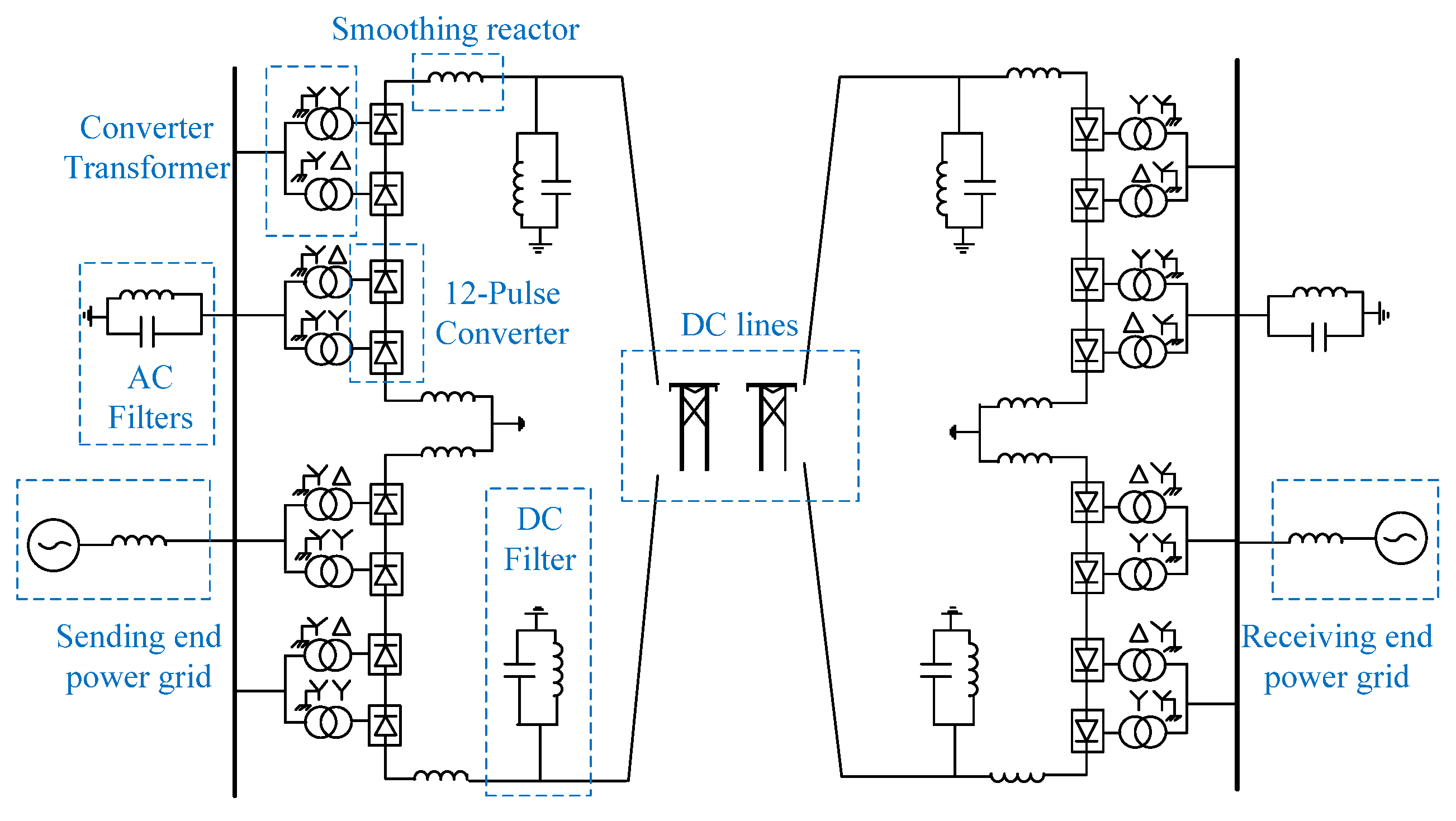

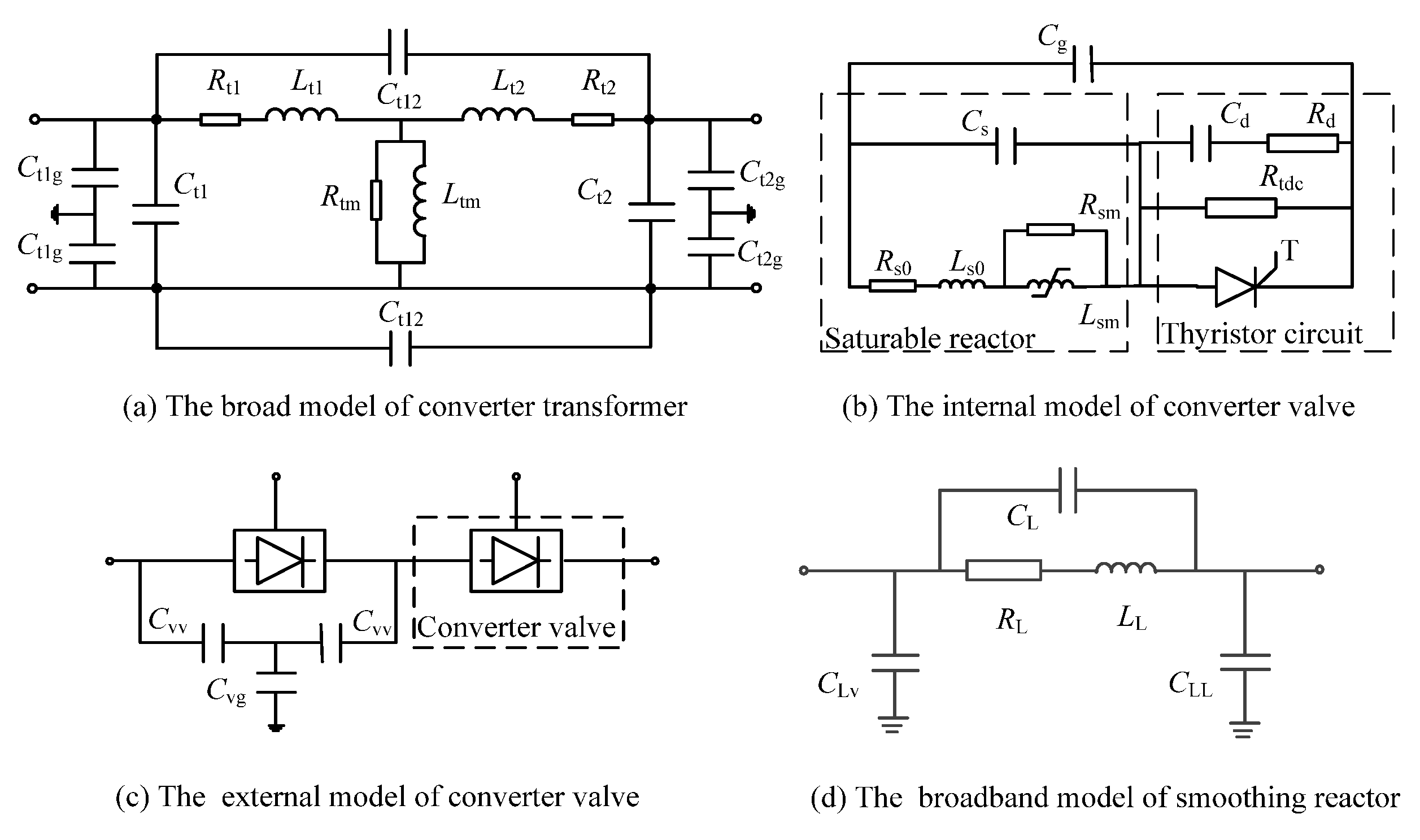
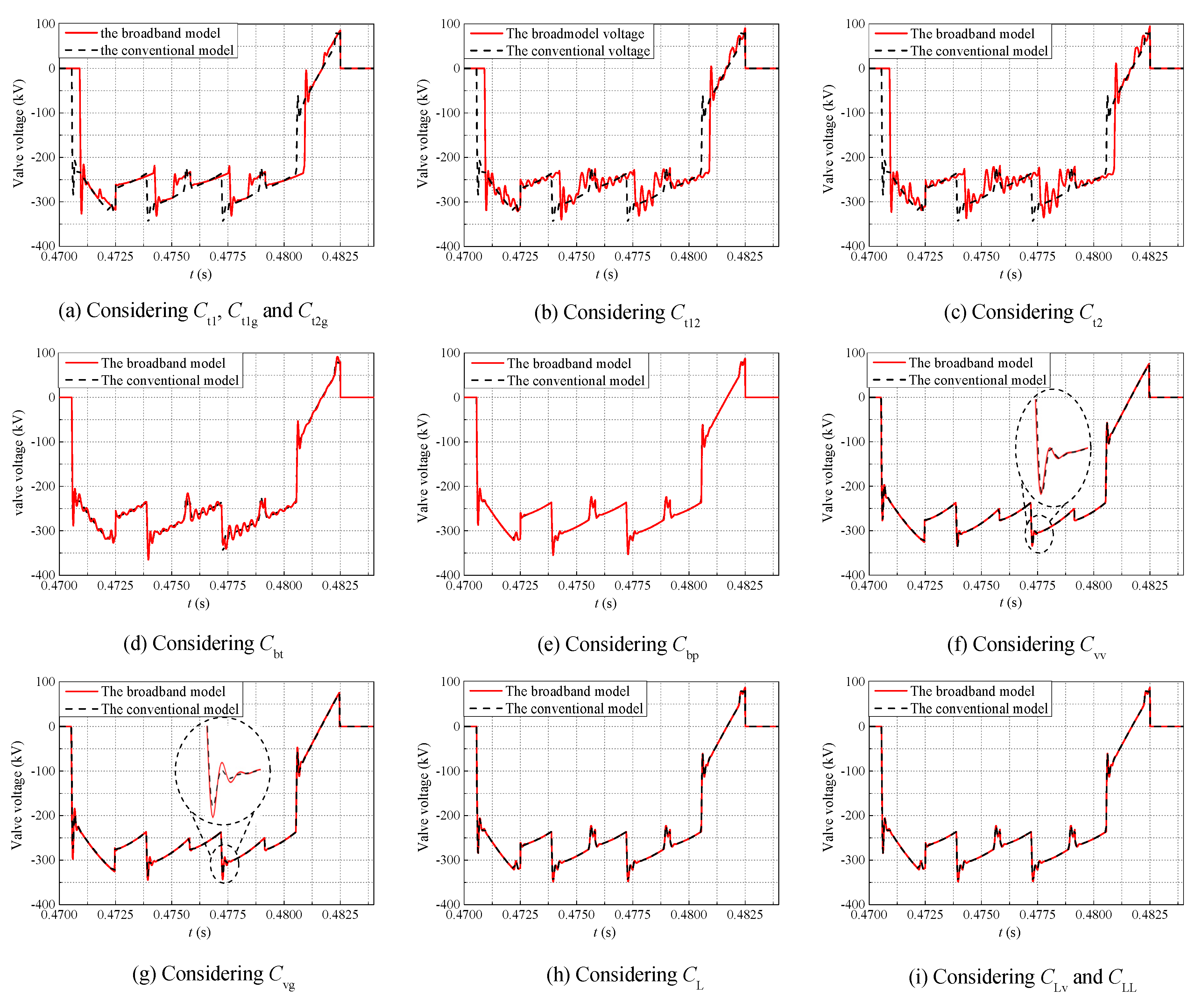

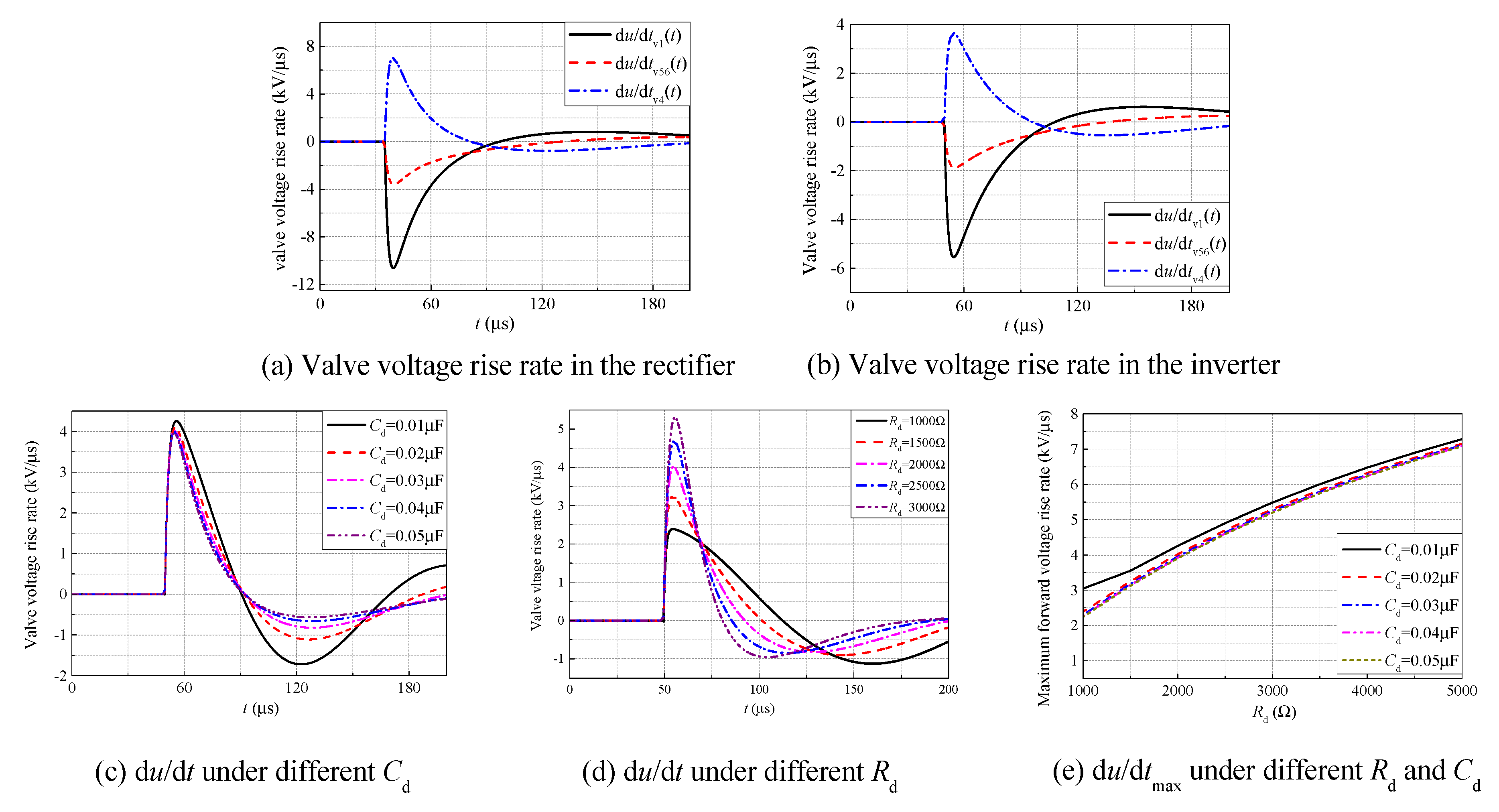
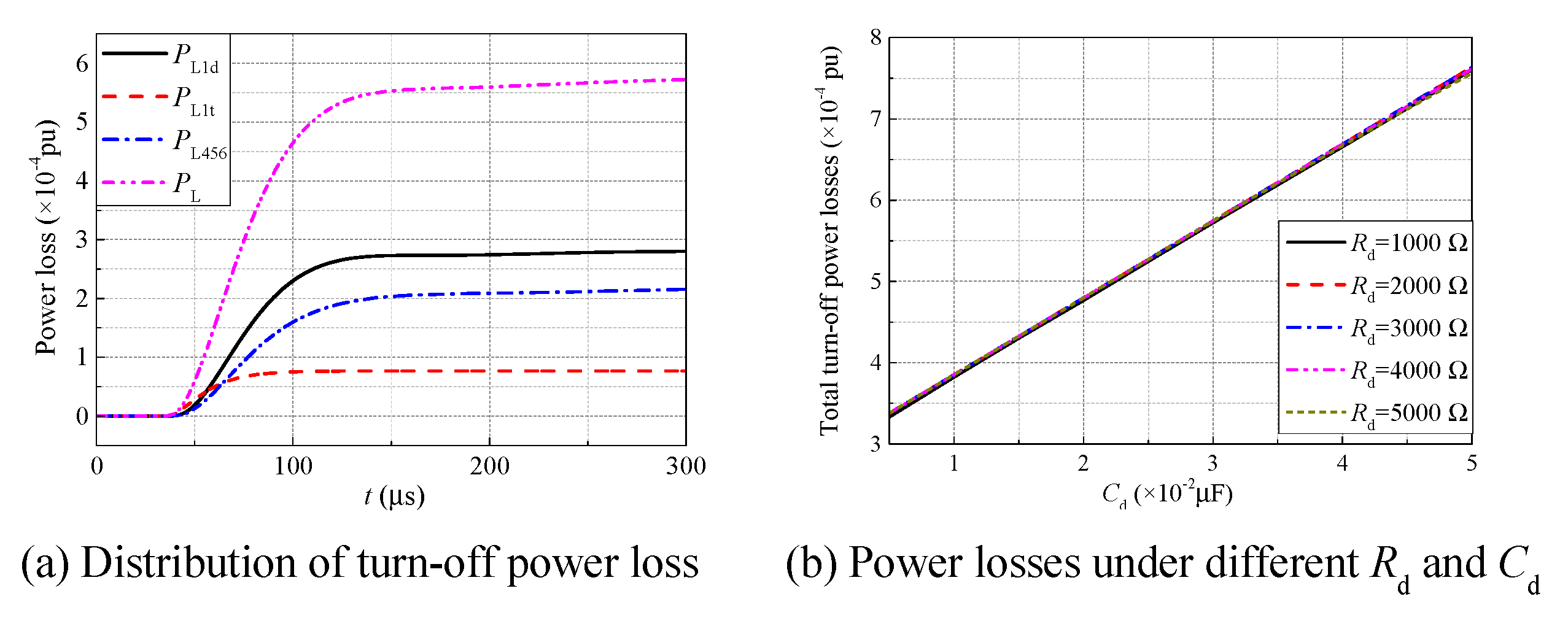

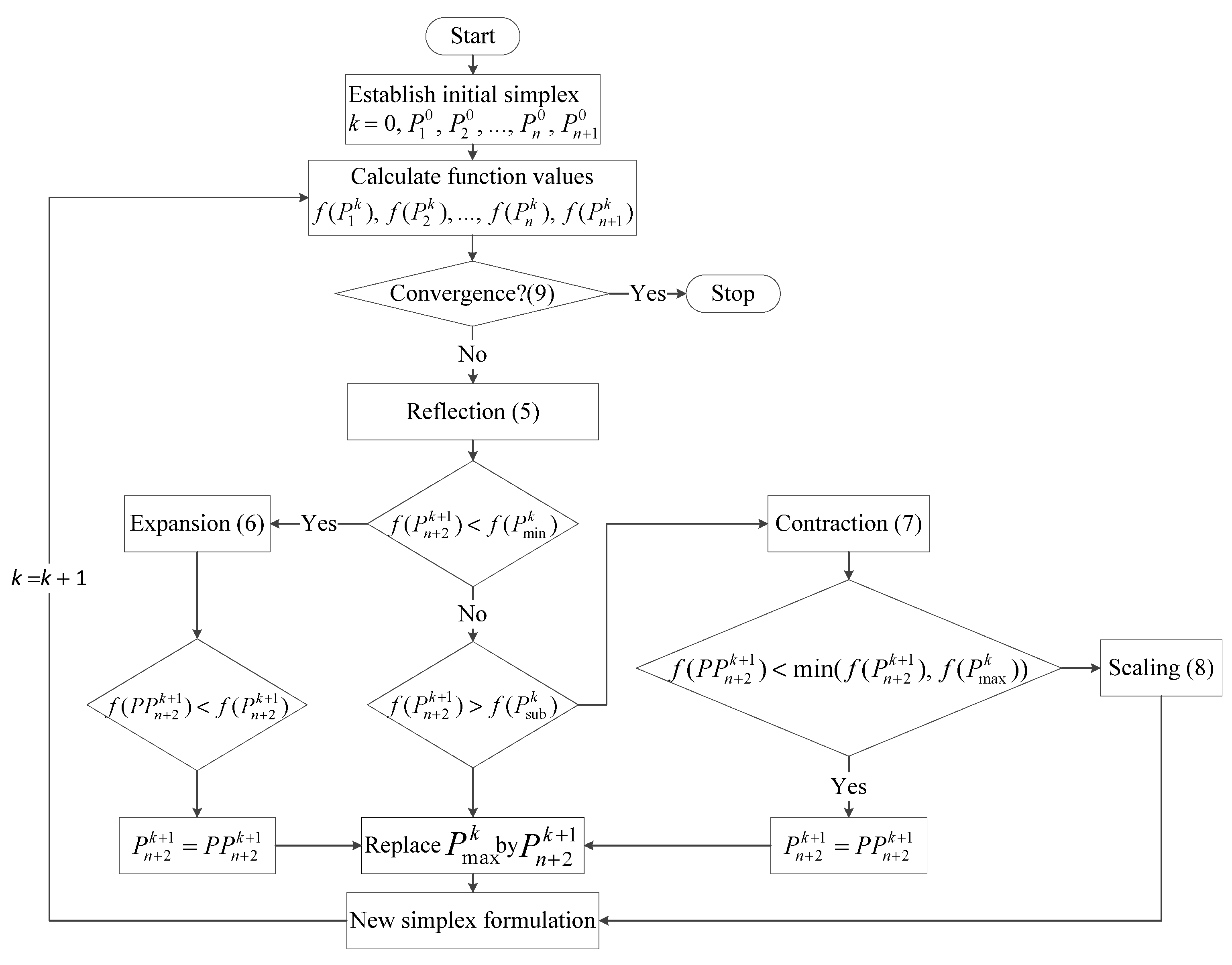
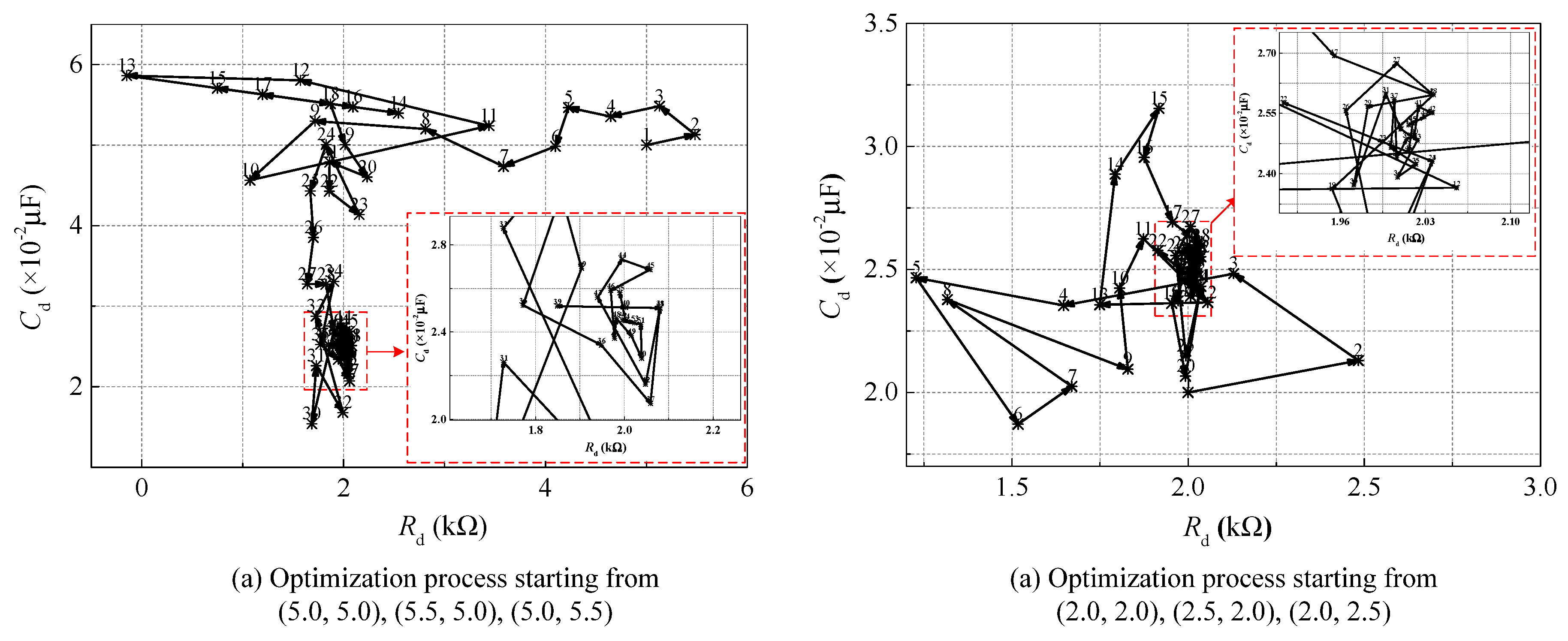
| Initial Simplex | Termination Point | Iterations | f(x) |
|---|---|---|---|
| (1.0, 1.0), (1.0, 1.5), (1.5, 1.0) | (2.02, 2.55) | 49 | 92.99 |
| (2.0, 2.0), (2.0, 2.5), (2.5, 2.0) | (2.02, 2.53) | 46 | 92.99 |
| (3.0, 3.0), (3.0, 3.5), (3.5, 3.0) | (2.02, 2.54) | 48 | 92.99 |
| (4.0, 4.0), (4.0, 4.5), (4.5, 4.0) | (2.01, 2.52) | 43 | 93.00 |
| (5.0, 5.0), (5.0, 5.5), (5.5, 5.0) | (2.00, 2.45) | 55 | 93.02 |
| Item | Rd (kΩ) | Cd (×10−2μF) | du/dtmax(kV/μs) | kovst | f(x) |
|---|---|---|---|---|---|
| Practical | 1.8 | 3.0 | 3.65 | 1.14 | 93.95 |
| Theoretical | 2.0 | 2.5 | 3.97 | 1.15 | 93.03 |
| Initial Simplex | Termination Point | Iterations | f(x) |
|---|---|---|---|
| (1.0, 1.0), (1.0, 1.5), (1.5, 1.0) | (1.98, 2.59) | 53 | 98.57 |
| (2.0, 2.0), (2.0, 2.5), (2.5, 2.0) | (1.96, 2.68) | 56 | 98.53 |
| (3.0, 3.0), (3.0, 3.5), (3.5, 3.0) | (1.95, 2.66) | 49 | 98.53 |
| (4.0, 4.0), (4.0, 4.5), (4.5, 4.0) | (1.96, 2.70) | 52 | 98.56 |
| (5.0, 5.0), (5.0, 5.5), (5.5, 5.0) | (1.97, 2.65) | 55 | 98.55 |
| Initial Simplex | Termination Point | Iterations | f(x) |
|---|---|---|---|
| (1.0, 1.0), (1.0, 1.5), (1.5, 1.0) | (1.88, 2.95) | 59 | 106.32 |
| (2.0, 2.0), (2.0, 2.5), (2.5, 2.0) | (1.88, 2.94) | 57 | 106.37 |
| (3.0, 3.0), (3.0, 3.5), (3.5, 3.0) | (1.90, 2.93) | 58 | 106.37 |
| (4.0, 4.0), (4.0, 4.5), (4.5, 4.0) | (1.84, 2.97) | 60 | 106.36 |
| (5.0, 5.0), (5.0, 5.5), (5.5, 5.0) | (1.85, 3.01) | 62 | 106.31 |
| Distribution | Rd (kΩ) | Cd (×10−2μF) | du/dtmax(kV/μs) | kovst | f(x) |
|---|---|---|---|---|---|
| 0 | 2.0 | 2.5 | 3.97 | 1.15 | 93.03 |
| ±5% | 1.95 | 2.66 | 3.97 | 1.15 | 98.53 |
| ±10% | 1.85 | 3.01 | 3.99 | 1.14 | 106.31 |
| w1 | Rd (kΩ) | Cd (×10−2μF) | PL(×10−4 pu) | kovst |
|---|---|---|---|---|
| 0.1 | 3.29 | 0.83 | 3.87 | 1.29 |
| 0.6 | 1.87 | 3.21 | 6.31 | 1.13 |
| 0.9 | 1.71 | 4.28 | 7.40 | 1.11 |
| w2 | Rd (kΩ) | Cd (×10−2μF) | PL(×10−4 pu) | kovst |
|---|---|---|---|---|
| 15 | 2.32 | 1.95 | 5.01 | 1.17 |
| 60 | 2.39 | 1.77 | 4.83 | 1.18 |
| 90 | 2.44 | 1.68 | 4.74 | 1.19 |
| w3 | Rd (kΩ) | Cd (×10−2μF) | PL(×10−4 pu) | kovst |
|---|---|---|---|---|
| 2.5 | 1.95 | 2.98 | 6.07 | 1.14 |
| 7.5 | 2.65 | 1.41 | 4.46 | 1.20 |
| 10 | 2.88 | 1.14 | 4.19 | 1.23 |
| Initial Simplex | Termination Point | Iterations | f(x) |
|---|---|---|---|
| (1.0, 1.0), (1.0, 1.5), (1.5, 1.0) | (1.80, 2.98) | 66 | 123.56 |
| (2.0, 2.0), (2.0, 2.5), (2.5, 2.0) | (1.80, 3.01) | 54 | 123.53 |
| (3.0, 3.0), (3.0, 3.5), (3.5, 3.0) | (1.80, 3.01) | 60 | 123.54 |
| (4.0, 4.0), (4.0, 4.5), (4.5, 4.0) | (1.81, 3.04) | 65 | 123.53 |
| (5.0, 5.0), (5.0, 5.5), (5.5, 5.0) | (1.81, 3.02) | 60 | 123.51 |
© 2020 by the authors. Licensee MDPI, Basel, Switzerland. This article is an open access article distributed under the terms and conditions of the Creative Commons Attribution (CC BY) license (http://creativecommons.org/licenses/by/4.0/).
Share and Cite
Tang, Y.; Zhang, Z.; Xu, Z. Analysis and Design of Damping Circuit Parameters for LCC Valves Based on Broadband Model. Energies 2020, 13, 1059. https://doi.org/10.3390/en13051059
Tang Y, Zhang Z, Xu Z. Analysis and Design of Damping Circuit Parameters for LCC Valves Based on Broadband Model. Energies. 2020; 13(5):1059. https://doi.org/10.3390/en13051059
Chicago/Turabian StyleTang, Yingjie, Zheren Zhang, and Zheng Xu. 2020. "Analysis and Design of Damping Circuit Parameters for LCC Valves Based on Broadband Model" Energies 13, no. 5: 1059. https://doi.org/10.3390/en13051059
APA StyleTang, Y., Zhang, Z., & Xu, Z. (2020). Analysis and Design of Damping Circuit Parameters for LCC Valves Based on Broadband Model. Energies, 13(5), 1059. https://doi.org/10.3390/en13051059







